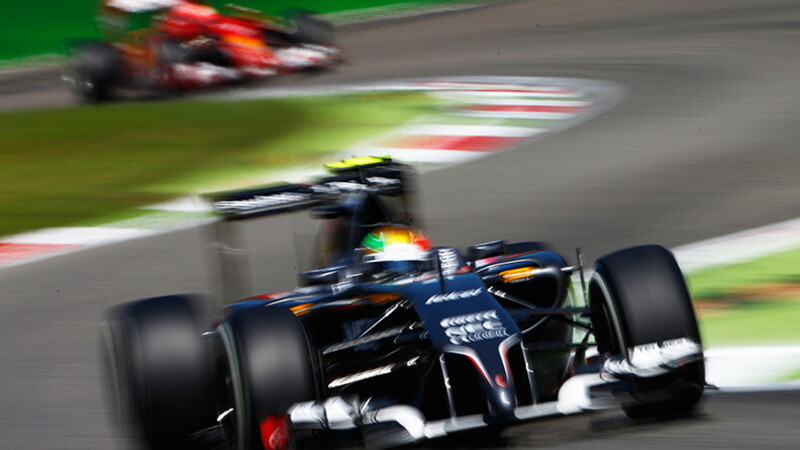372 kph in the temple of speed

The famous Autodromo hosts round 13 of the 2017 Formula 1 World Championship during the first weekend of September. But there's an even more important statistic, which is that this is the 68th year since the world championship was created and Monza is now hosting its 67th race as part of it. No other circuit has been such a permanent fixture on the schedule, not even Silverstone or Monaco.
But back to the track itself. By modern standards, Monza is a bit stop-and-go: those massive top speeds are punctuated by heavy braking and chicanes. There aren't the big elevation changes and vertiginous compressions of Spa, for example.
Set against the copy and paste nature of many current circuits though, Lesmo 1 and 2, Variante Ascari and Parabolica stand out as being truly different. At Monza, a low downforce set-up means that most forces are longitudinal: in other words, acceleration and braking; imposing massive demands on the drivers and cars. Because of that, both then and now, Monza has been known as ‘the temple of speed'. A definition that has met with universal acclaim.

At 360kph, a car is covering 100 metres every second. Once the pit straight is done, the drivers have to stand on the brakes and gears to slow down to the 70kph or so with which they will enter the tight right-hander that forms the beginning of the first chicane. To get from 360kph to 70kph the drivers have to scrub off 290kph. It's a huge technical and human challenge that makes the mind boggle. That's why the chicanes at Monza aren't really a choice, but instead an absolute necessity.
Back in 1971, Englishman Peter Gethin won in his BRM at Monza with an average speed of 242.615kph. That's not just an average of one lap: instead it's the average speed over the entire race. This record became a milestone for more than 30 years. In 1971, Monza was simply a circuit made up of fearsome straights linked by a few corners, and no chicanes. Some of those corners back then, such as the two Lesmos, became the stuff of nightmares for drivers in the nights leading up to the Italian Grand Prix.
At the end of each straight the drivers approached every corner in single file formation to benefit from slipstreaming. Then they would duck out of the slipstream in the hope of finding an overtaking opportunity in the corners. As a result of which, Peter Gethin won not only the fastest grand prix of the twentieth century, but also the closest one in terms of distance between the frontrunners: Ronnie Peterson (March), Francois Cevert (Tyrrell), Mike Hailwood (Surtees) and Howden Ganley (in another BRM) finished line astern, covered by just 61 hundredths of a second in total.

But then Monza changed: the speeds were just too fast. The chicanes were introduced, which reduced average lap speeds (and therefore total race distance) but did nothing to reduce maximum speed reached. And so, Monza, characterised by its never-ending straights and seemingly infinite limits, continued to set records.
Some 32 years after Gethin's record, Michael Schumacher – at the wheel of his extraordinary Ferrari – won the 2003 race at a crazy average speed of 247.585kph: around five kilometres an hour faster than Gethin managed. It's a record that still stands today. What's maybe even more impressive was the increase in top speeds over the years, all the way up to the 372kph benchmark established by Montoya in 2005. Yes, it was another era with other cars. But even today, those numbers are still exceptional.
And now let's talk of tyres. At speeds of 360kph, a tyre rotates 2800 times a minute and almost 50 times per second. These are extreme rotations that have a profound effect, with each tyre subjected to loads that can reach 1000 kilograms. Under these loads the contact patch increases and the part of the tyre that is in contact with the ground undergoes notable deformations. At the same time, the top of the tyre – the part that isn't in contact with the ground – is subjected to large centrifugal forces: yet its shape does not change even by one per cent. That's an incredible achievement made possible by the light weight of the tyre and the exceptional rigidity of materials developed by Pirelli for Formula 1.
The Italian circuit imposes forces and loads on tyres that are almost unimaginable. This is why Pirelli's Formula 1 tyres are specifically developed and researched to cater for the most extreme demands of performance in the automotive world.
And that's also why Monza, as well as being Pirelli's home race – just a few kilometres from global headquarters in Milan – is a perfect symbol of the Italian firm's sporting and technical achievements as well.




